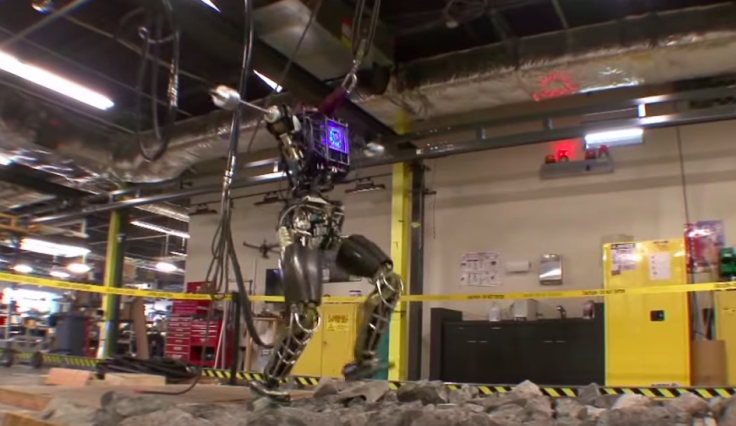Watch Google's Humanoid Robot Crash Through A Forest, Step Gingerly Over Rocks [VIDEOS]

Meet the newest robot to obsess over ... or freak out about. From the team that brought us the cheetah-bot comes "Atlas," the humanoid robot that can navigate rocky terrain, survive a hit from a wrecking ball, and even journey through a forest.
If you're not quite ready for that kind of creature, then don't go to Waltham, Massachusetts, home of the robot's creator, Boston Dynamics. Google (NASDAQ: GOOG) acquired the engineering company in December 2013 and placed it under its Google X division, dedicated to innovative tech advancements such as the self-driving car. Boston Dynamics has also received funding from Defense Advanced Research Projects Agency and other U.S. military groups.
Earlier this week, Boston Dynamics released a new video of Atlas undergoing endurance and stability testing, with Boston Dynamics founder Marc Raibert featured in a video presentation. In the video, Atlas navigates a rock bed, stepping lightly on some rocks, and maintains his balance when he is hit with a wrecking ball.
"Our focus is on balance and dynamics," Raibert said in the video. "Working a little bit the way people and animals do, where you move quickly in order to keep yourself stabilized if you're disturbed."
Atlas made his public debut in July 2013 and has since been reiterated and tested by the team to expand its human-like capabilities and endurance. At its latest testing, the robot stood six-foot-two, weighed about 300 pounds, and had 28 joints that allow it to tread lightly, The Telegraph reports.
And he's already escaped the lab. Raibert, a former professor at the Massachusetts Institute of Technology, announced in the new video that his team has begun testing Atlas outdoors. Though Atlas is currently tethered to a power source (so it cannot completely roam free), the team is working on an untethered version, Raibert said.
"We're making pretty good progress on making it so it has mobility that's sort of within shooting range of yours," Raibert said. "I'm not saying it can do everything you can do, but you can imagine if we keep pushing, we'll get there."
© Copyright IBTimes 2024. All rights reserved.












